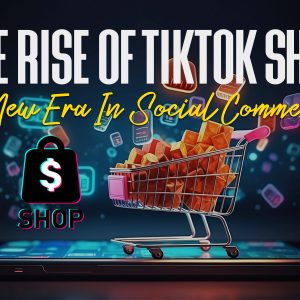
In the ever-evolving landscape of digital marketing, the power of influencer partnerships reigns supreme. Gone are the days of faceless, impersonal advertising campaigns. Today, consumers crave authenticity, connection, and the human touch. This is where influencers step in, acting as trusted voices and bridges between brands and their target audiences.
But navigating the world of influencer marketing can be a daunting task. With countless platforms, personalities, and metrics, crafting an effective strategy requires careful planning, meticulous execution, and ongoing analysis. This comprehensive guide delves deep into the intricacies of influencer marketing, empowering you to leverage its potential and supercharge your brand’s reach, engagement, and ultimately, success.
Building a Winning Foundation: Essential Steps before Influencer Engagement
Before diving headfirst into influencer partnerships, it’s crucial to lay a solid foundation. This involves defining your goals, understanding your target audience, and identifying the right influencers. Let’s unpack these key steps:
1. Goal Setting: Charting Your Course
What do you hope to achieve through influencer marketing? Boost brand awareness? Drive website traffic? Increase sales? Clearly defined goals guide your entire strategy, ensuring every decision aligns with your desired outcomes. Common goals include:
- Brand awareness: Partnering with relevant influencers exposes your brand to a wider audience, increasing visibility and recognition.
- Engagement and community building: Influencers can spark conversations, generate user-generated content, and foster a sense of community around your brand.
- Lead generation and sales: Collaborating with influencers can drive traffic to your website or landing pages, leading to increased leads and conversions.
- Product promotion and reviews: Influencer endorsements and reviews add credibility and trust, encouraging potential customers to try your products or services.
2. Target Audience: Knowing Your Tribe
Understanding your ideal customer is paramount. Who are you trying to reach? What are their interests, demographics, and online behavior? Knowing your target audience helps you identify the right influencers who resonate with them and have a genuine following in their space.
3. Influencer Selection: Finding the Perfect Fit
Not all influencers are created equal. Choose partners who align with your brand values, aesthetics, and target audience. Consider factors like:
- Relevance: Does the influencer’s content and expertise match your brand’s niche?
- Engagement: Does the influencer have a loyal and active following? Look at metrics like likes, comments, and shares.
- Authenticity: Does the influencer feel genuine and relatable? Avoid robotic engagements and overly promotional content.
- Reach: Consider the influencer’s follower count, but don’t prioritize numbers over engagement. Micro-influencers with niche audiences can be highly effective.
Crafting Compelling Collaborations: From Concept to Execution
Once you’ve laid the groundwork, it’s time to bring your influencer partnerships to life. Here’s how to create impactful collaborations:
1. Campaign Development: Storytelling with Impact
Develop a clear campaign concept that aligns with your overall marketing strategy and resonates with your target audience. Consider:
- Campaign theme: What message do you want to convey? How can influencers help tell your brand story?
- Content formats: Will you use product reviews, tutorials, behind-the-scenes glimpses, or contests?
- Call to action: What do you want your audience to do after engaging with the influencer content?
2. Collaboration Guidelines: Setting Expectations for Success
Clearly communicate your expectations to the influencer. This includes:
- Brand guidelines: Provide brand messaging, voice, and visual identity to ensure consistency.
- Creative freedom: Allow the influencer to inject their own personality and style, maintaining authenticity.
- Performance metrics: Define how you will measure the success of the campaign (e.g., engagement, website traffic, sales).
- Deliverables: Specify the expected content formats, timelines, and approval procedures.
3. Content Creation and Amplification: Spreading the Word
Once the content is created, it’s time to share it with the world! Leverage the influencer’s channels and your own marketing platforms to maximize reach and engagement. Here are some tips:
- Cross-promotion: Share the influencer’s content on your social media channels, website, and email marketing campaigns.
- Paid promotion: Consider paid advertising on social media platforms to further amplify the reach of the content.
- User-generated content: Encourage your audience to share their own experiences with your brand using a dedicated hashtag.
- Collaborate beyond the campaign: Build long-term relationships with your influencer partners for ongoing brand advocacy.
Measuring and Analyzing: Tracking Your Progress and Optimizing for Success
Data is your friend in influencer marketing. Regularly track and analyze campaign performance to understand what’s working and what needs improvement.










